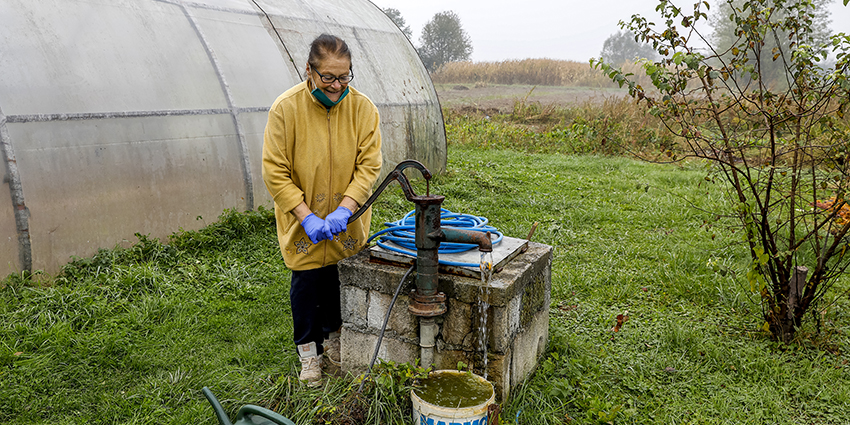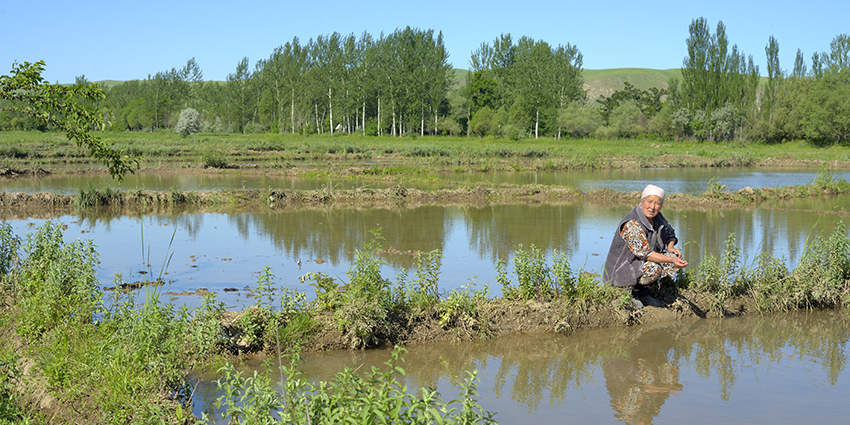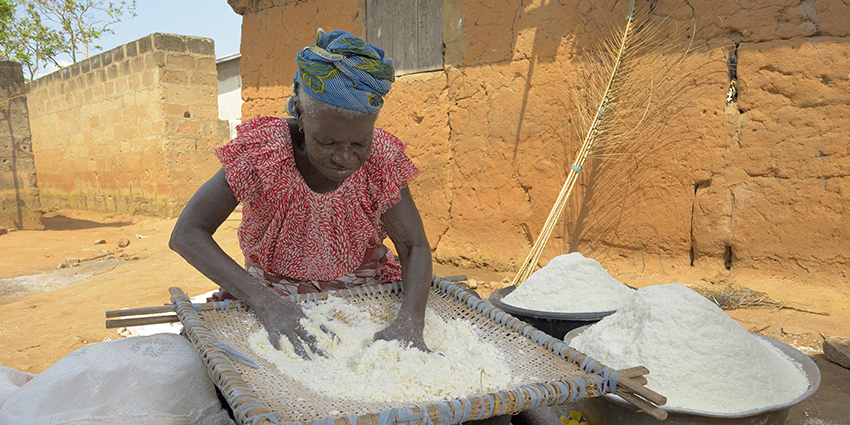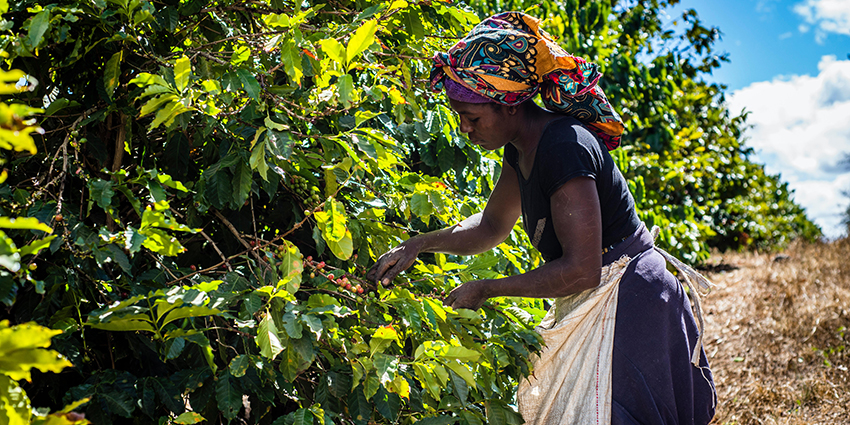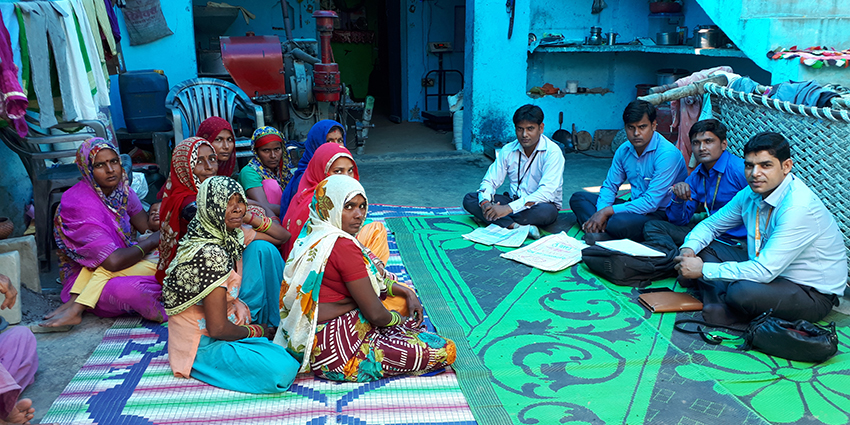Hélène Keraudren Baube & Edouard Sers, Grameen Crédit Agricole Foundation

To overcome the effects of this unprecedented health and economic crisis, the Foundation has had to innovate, adapt, and collaborate with other key players in the inclusive finance and social impact entrepreneurship sectors. This cross-functional effort involves all of the Foundation's teams. To learn more, we highlight the testimonies of two Foundation experts: Hélène Keraudren-Baube, Administrative and Financial Director, and Edouard Sers, Director of Risk, Compliance, and Social Performance.
1. How has the Covid-19 crisis impacted the internal organization of the Foundation and the organizations it supports?
Helen: We resorted to teleworking overnight, but since it was already a possible option at the Foundation, the transition was very smooth. In addition to providing the equipment for teleworking, we also adapted the schedules to take into account the context of confinement with children at home. We have experienced a very unusual year, with no field missions for the team based in France since February, while the Investment Officers all go on field missions several times a year. The Foundation's Steering Committee held regular updates to monitor the situation and determine the best measures to support the teams and funded organizations. In addition, we have been communicating more regularly with our governance to keep them informed of the evolution of the situation and activity.
2. What responses did the Foundation provide to address this?
Edward: The Foundation's first response was to establish a rapid and ongoing dialogue with the organizations we support to understand the effects of the crisis, the measures taken, and their needs. Our investment management teams remained in very close contact with all the organizations we support, and we conducted regular surveys with them to understand the impacts of the crisis in the various countries where we operate. In addition, we created the Covid-19 Observatory, in which we regularly published articles to share our analyses and inform stakeholders of developments in the situation. At the same time, we led an international coordination of lenders and inclusive finance stakeholders to act together, in consultation, to protect microfinance institutions and their clients and prevent any liquidity shock that would have destabilized the sector.
Helen: We have adapted our monitoring and analysis tools and our requests for information, particularly regarding business continuity plans and short-term cash flow plans. On the financial front, we have granted deferrals to around thirty of the Foundation's partner organizations, primarily microfinance institutions. These deferrals, ranging from 6 to 12 months depending on the case, have been materialized by amendments to loan contracts and revised payment schedules. This volume of deferral requests is completely unprecedented and has put stress on our liquidity. We have refined our projection and monitoring tools to track the financial impact on the Foundation.
3. Regarding the international coalition, what are the first results?
Edward: Six months after signing the Commitment, we and all the signatories produced a joint publication presenting the status of implementation of the Commitment's 10 principles. Among the publication's conclusions, we can highlight the strong coordination between international donors to agree on payment deferrals, avoiding a liquidity crisis in the microfinance sector. We have also made progress in the area of technical assistance, including joint webinars and field surveys with end clients. Finally, we have encouraged the coordinated collection of information on staff management and client monitoring of microfinance institutions and are promoting initiatives to strengthen client and staff protection. In 2021, we will continue our efforts to support the gradual recovery of the microfinance institutions we support with technical assistance, tailored financing, and regular exchanges between the various stakeholders in the sector.
4. In relation to the Foundation's donors, what joint actions have been taken?
Helen: We very quickly kept our donors informed of the evolving situation, with detailed presentations. We understood from the start of the crisis that the main impact for us in 2020 would be on our liquidity management. Requests for deferrals from our partners are putting a strain on the Foundation's cash flow, and we wanted to preserve our ability to support our partners and avoid a liquidity crisis at all costs. To this end, we requested deferrals from our donors and considered new "special Covid-19" financing lines to support the resumption of activity of the microfinance institutions we support.
5. Finally, what are the prospects for 2021? What will be the Foundation's priorities?
Helen: After a year 2020 marked by an operating result supported by portfolio growth in previous years and substantial savings in 2020, particularly on travel expenses, 2021 will be directly impacted by the contraction of the Foundation's loan portfolio following the crisis. The Foundation's activity should continue its gradual and cautious recovery begun in recent months. We believe that the first half of the year will still be heavily constrained by the pandemic and its consequences, and we hope to be able to resume our field trips, as close as possible to our partners, from the second half of the year. It will probably take another year for the Foundation to return to the level of activity it had before the crisis.
Edward: A large proportion of the organizations we support have successfully weathered the crisis and are eligible for the Foundation's funding based on standard risk criteria. However, a significant proportion of them still carry significant risk from 2020 on their balance sheets. It is crucial that we continue to strengthen our support system to offer solutions tailored to different levels of risk, combining new financing, technical assistance, loan deferrals, or—in more exceptional circumstances—debt restructuring.
At the sector level, lenders were able to coordinate in 2020 to avoid a liquidity crisis, and we will continue on this path in 2021. This year will also be crucial for investors to support microfinance institutions in accordance with their responsibility as shareholders. Finally, we will continue to promote initiatives to protect the clients and staff of microfinance institutions during this time of crisis. For example, we are actively participating in the Social Performance Task Force (SPTF) working group to define new certification criteria for client protection in the sector. Ongoing dialogue with our partners and coordinated actions will be among the keys to the success of our commitments.
